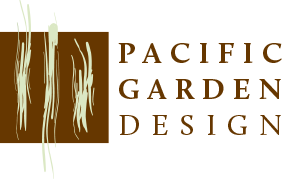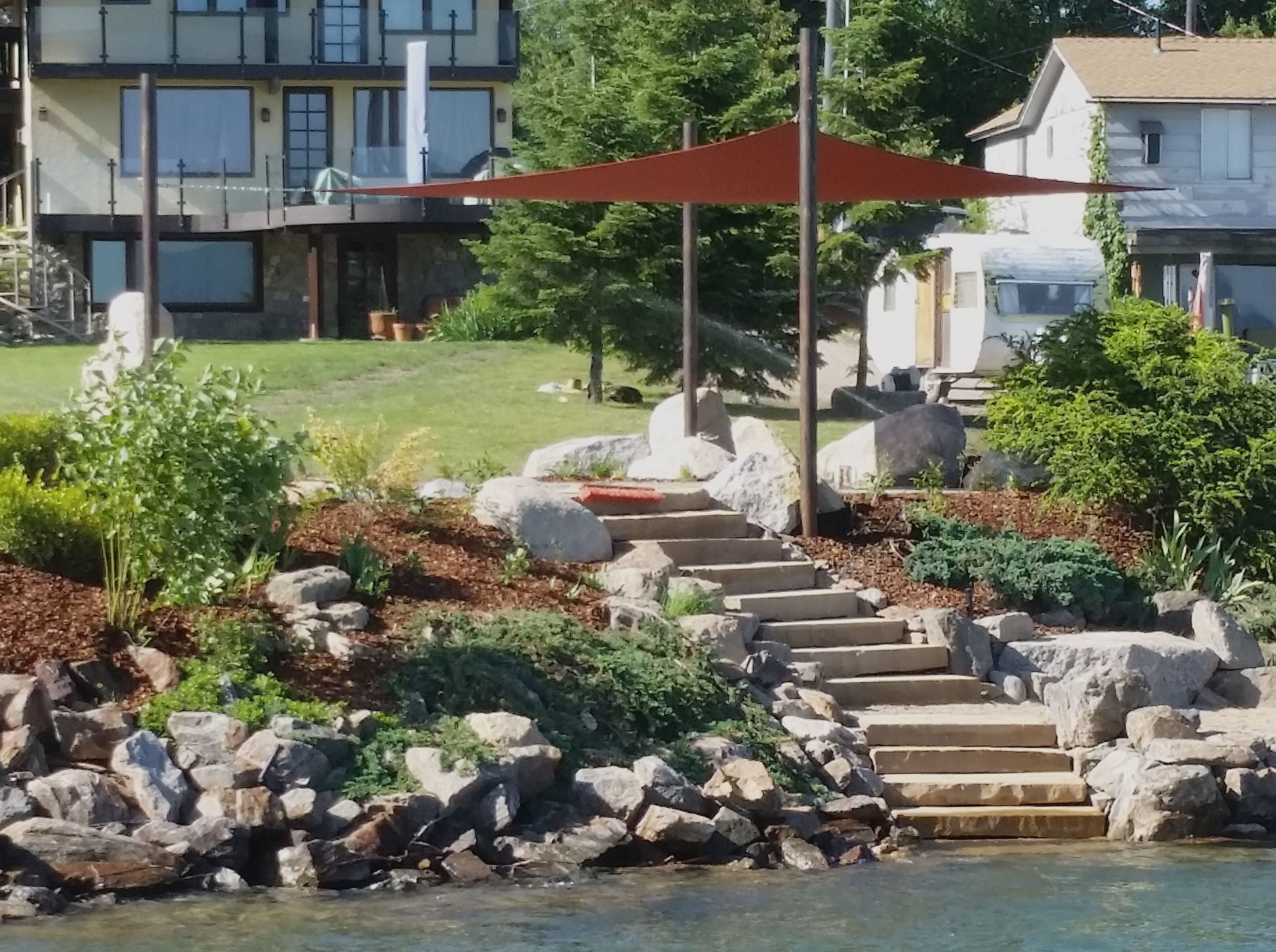Water is a dynamic element, both in nature and in your yard. A water feature can be the focal point of your landscape or simply add atmosphere in the background. From natural streams to shooting fountains and bubbling rocks to metal rills, the endless variety of sizes and styles makes a water feature a feasible part of any landscape design. Not sure if a water feature is right for you? Take a look at the projects below to see some of the many ways a water feature can work in your landscape.
Transform Your Entrance
This moat-like water feature creates an experience for visitors.
The landscaping around your home defines visitors’ experience as they enter. A water feature by the front door beckons guests towards it while setting the tone with its visual and auditory displays. This project takes things a step further, with its bubbling basalt fountain emptying into an artificial stream that flows along the front of the house. A wooden bridge traverses the stream, marking the transition into the home and creating an immersive entry journey. By choosing not to treat the water with chlorine, the homeowners have made their water feature into a resource for wildlife from the nearby conservation area as well.
Keep It Natural
A stream-like water feature doesn’t have to be a show-stopper. It can be an understated natural feature in landscapes with native, unmanicured areas. Here, a small stream with modest waterfalls creates an opportunity for a calm, contemplative sitting area. The sound of running water anchors the space in nature, despite it being a short walk from the residence. The stream also provides water to passing wildlife, giving the water feature an ecological purpose in addition to its aesthetic function.
Repeat a Pattern
This core-drilled boulder fountain ties into matching boulders throughout the landscape.
Water features don’t need to be expansive to make a statement. This self-contained fountain is crafted from a boulder that echoes others in the landscape, including a large dive rock across the pool. A simple bubbling flow tumbles down the boulder into a basin hidden below a gravel-covered grate. The subtle action of this water feature allows the stone itself to hold equal prominence. Repeating that material throughout the landscape creates a site-wide pattern that integrates various areas into a cohesive design.
Tie It Together
The mix of natural and man-made materials makes this water feature a unifying landscape feature.
When a water feature is a focal point in the landscape, its design can be a keystone in the overall style. On this project, the contemporary architecture is complemented with more natural, organic landscaping. The courtyard water feature combines the two, comprising geometric poured concrete and natural basalt boulders. The basin and equipment is hidden beneath metal grating and gravel, which also conceals the mechanism for a fire pit burner. This anchors the water feature visually, further integrating it into the landscape.
Create a Theme
Not every water feature has to be custom-built on site. A traditional fountain design offers a self-contained option, and the wide variety of sizes and styles available means that there is truly an option for any landscape. Fountains are often a piece of art in themselves and can define the style of a space. This classical home features a statement-making European-inspired fountain across from the entrance, establishing a geometric, symmetrical theme that is carried through the landscaping surrounding the house.



















